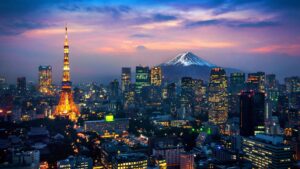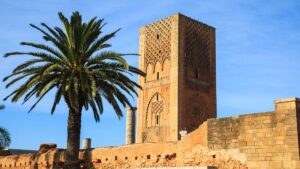Key Takeaways
- Diwali in India is a five-day Hindu lunar calendar festival that typically occurs between October and November, with the main day in 2025 set for October 20.
- The festival celebrates the themes of hope, renewal, and togetherness, with origins in various local mythologies that unite people across India irrespective of religion.
- Come celebrate Diwali by lighting homes with diyas and rangoli, bursting crackers, enjoying festive feasts, and shopping in vibrant markets.
- Cities such as Delhi, Jaipur, and Varanasi are hosting colorful open-air celebrations, brightly lit temples, and cultural events. They are wonderful places to visit.
- By respecting local customs, dressing modestly, staying away from glutted fireworks zones, and participating mindfully, you’re bound to have a better Diwali as a traveler!
- Book your travel early because transport and accommodation will be in short supply, and don’t forget an Ubigi eSIM to make your festival travels easier.
Introduction
Diwali in India falls in October or November each year, based on the Hindu lunar calendar. Known as one of the most significant and popular festivals, Diwali symbolizes the triumph of light over darkness and good over evil.
You see homes aglow with lamps, roads bursting with colors, and people distributing sweets.
1. When is Diwali in India?

Diwali or the Festival of Lights comes according to the Hindu lunar calendar. That means that the festival date varies from year to year, in accordance with the lunar cycles. Diwali is between mid-October and mid-November, so it never falls on the same date twice. Take 2022, for instance, Diwali fell on October 24. These dates move around because the Hindu lunar calendar isn’t tied to the solar calendar most of the world uses.
Diwali is not just for one day. It extends over three to five days, and each day is significant and different in its observances. The biggest day is Lakshmi Puja. On this principal day, families get together to worship Lakshmi, the goddess of wealth and prosperity, with prayers and lighting of oil lamps known as diyas.
Choti Diwali, also known as Naraka Chaturdashi, is the second day. This day commemorates the defeat of the demon Narakasura and is celebrated through small get-togethers and sweets. The fourth day, Govardhan Puja, celebrates Govardhan Parvat and is observed through rituals and offerings in villages.
Ayodhya, a city in Uttar Pradesh, in 2023, broke a Guinness World Record by lighting over two million oil lamps on Diwali eve. This demonstrates how massive and vibrant these celebrations can be.
If you visit India during Diwali, you’ll find cities and towns begin preparing weeks in advance. Streets will be adorned with lights and flowers. Markets will be buzzing with sweets and gifts. Diwali weather is mild, about 20 to 30 degrees Celsius, which makes for a nice travel season.
Big cities like Delhi and Mumbai have bigger crowds and bigger festivals. Smaller towns provide a more intimate glance at local traditions. The flights and hotel rooms fill up fast, so if you want to be part of the celebration, plan early.
2. Why is Diwali Celebrated in India?
The History, Mythology, and Regional Significance of Diwali

Diwali, also known as deepavali or dīpāvalī, is one of the biggest religious festivals celebrated in India. It attracts individuals from various backgrounds and religions. India and over a billion people around the world celebrate every year.
At its heart, Diwali celebrates the victory of light over darkness and the promise of new beginnings. The mythology and customs associated with Diwali vary slightly by region, especially between eastern India and other parts of the country. The theme remains consistent: light triumphs over darkness.
In North India, Diwali is connected with Lord Rama. According to the legend, Prince Rama returned to Ayodhya with his wife Sita and brother Lakshmana after 14 years of exile and killing the demon king Ravana. People illuminated lamps to lead them back home, so even now a great many light diyas to celebrate the festival.
If you turn your gaze to South India, the emphasis changes. There, they commemorate Hindu god Krishna or Lord Vishnu’s triumph over demons like Narakasura. Both narratives emphasize the triumph of evil being defeated and hope being planted.
West India adds a further dimension. Here, Diwali is heavily associated with Goddess Lakshmi, the deity of wealth and prosperity. By lighting lamps on the new moon’s night, she is welcomed and good fortune is invited for the year.
Interestingly, during the Mughal era, emperor Jahangir observed Diwali celebrations in his court, highlighting how the festival’s spirit transcended religious lines.
Cultural Unity and Festive Traditions
Diwali isn’t only a Hindu festival. For the Jains, it commemorates the liberation of Mahavira. Sikhs observe Bandi Chhor Divas on the same day, commemorating the liberation of Guru Hargobind from prison. These links demonstrate how Diwali unites different faiths.
The festival spans five days, according to the Hindu lunar calendar. It’s an opportunity for you and yours to come together, break bread, swap presents and begin the new year with optimism and camaraderie.

3. How to Celebrate Diwali in India
A. Symbolic and ritual aspects of Diwali

While Diwali is a 5 day festival, you’ll experience the majority of the big traditions unfold over 3 to 4 days. Outside, you join in by lighting diyas, oil lamps made from clay or wheat flour and filled with sesame oil. These oil lanterns are strewn all over homes, particularly on Yama Deepam when one is placed by people facing south at the back of the house.
Rangoli, vibrant colored floor motifs, adorn doorways and courtyards. After sunset, fireworks displays light up city skies celebrating the joy of the festival. Every night, families come together for puja, or prayers. They pay homage to Lakshmi and Ganesha with various rituals such as offerings (eg: puffed rice, candy toys, rice cakes and batashas).
Many Hindu temples across India hold special ceremonies during this time, drawing large gatherings from the Hindu community. These spiritual observances often begin with a ritual bath in holy water before entering the temple to pray.
B. Social and celebratory aspects of Diwali
Food is a huge part of Diwali! Savor plates of mithai like laddoos and barfis and savory treats. Don’t miss the occasion to try these festive foods or indian sweets! Families throw big home celebrations and invite relatives. Occasionally they will invite a newlywed daughter or son and their ‘better half’ for a festive meal and gift exchange.

The festival is the high point of shopping. Dhanteras and Choti Diwali markets get thronged with people purchasing sweets, gold ornaments, utensils, or new clothes to wear to the festivities.
If you want to experience the grandest light shows, head to Varanasi to witness the ghats decked out in thousands of lamps and Indian lantern displays. Jaipur’s streets shine with decorations on every building. Delhi’s fairs and melas present cultural shows, music, and food stalls.
Narak Chaturdashi in Goa features big effigies. Ayodhya broke a record in 2023 with over two million oil lamps.
Do’s and Don’ts:
- Do respect local customs and take off your shoes in homes.
- Do wear modest, festive clothes. Traditional is fine for all.
- Avoid lighting fireworks in congested areas. Keep children away from fire.
- Don’t enter private religious ceremonies unless invited.
4. Where to Experience Diwali?
A. Iconic Destinations and Cultural Highlights of the Diwali Festival

If you think about where to experience Diwali in India, you’ll find many places with their own style and charm. Every city has a unique way to witness the Diwali lights, sounds, and spirit… It’s truly one of the grandest Hindu festivals celebrated across the Indian subcontinent.
Explore big cities such as Delhi, Jaipur, Varanasi, Amritsar, and Kolkata. Delhi is eloquent with its sparkling neighborhoods and firecrackers. Jaipur, or the “Pink City,” is known for the whole city center lit up with lamps and fairy lights. Varanasi has its riverfronts, or ghats, lit with lamps as people congregate for evening prayers.
Amritsar throws in fireworks displays and public concerts to the mix, rendering the city’s Golden Temple area a spectacle to behold. This is a perfect fusion of Hinduism and Sikhism coming together in celebration.
Udaipur dresses up Diwali in its palaces and Lake Pichola, which mirrors the glow for a picturesque glimpse. Kolkata celebrates with an emphasis on the goddess Kali, which lends its own flavor of rituals and displays to the festival. It reflects the regional diversity in East India.
Mysore has its palace illuminated with tens of thousands of bulbs, which attracts crowds every year. Goa is another hot spot, with the local restaurants and shops celebrating and attracting pilgrims from all over the country. For followers of Jainism, this period also holds spiritual importance, adding to the inclusive nature of the big celebration. If you prefer cooler, dry weather for your outdoor festivities, North India is a good choice during this time of year.
B. Experiencing Diwali’s Festive Spirit

Check out local Diwali bazaars for decorations, sweets, and presents. Discover handmade diyas, vibrant rangoli powders, and freshly made sweets such as laddoos and barfis. Find these markets in almost every city and provide you a practical opportunity to participate in the festivities.
Go to cultural events and public Diwali shows. Most cities have open air concerts, traditional dancing and fireworks. They take place in parks, city centers or adjacent to temples and provide accessible opportunities to experience local traditions and music.
Experience lit-up temples and public squares. Temples, palaces, and main streets radiate with rows of oil lamps and electric lights. This is a a dazzling reminder of how Diwali is not only a spiritual observance but also an official holiday uniting millions in joy and devotion.
5. Travel Tips for India During Diwali
Diwali, which occurs between September and November, attracts crowds from all over India and the globe. There are family get-togethers, fireworks, gifts, and different traditions depending on the region. If you’re going to be on the road during this period, a little advance preparation can save you some trouble and let you enjoy the festivities.
A. Plan Ahead for Festive Travel

Diwali is one of India’s busiest travel seasons. Trains, flights, and hotels get booked weeks in advance, especially in popular cities like Jaipur, Delhi, Varanasi, and Amritsar. These are the places famous for their spectacular Diwali illuminations and bustling street parties. Everything is more expensive and there are fewer options if you wait to reserve.
Because almost everyone travels 2 to 3 days before Diwali, traffic jams are the norm. If you can flex your plans, avoid peak days. For example, if you have to travel through the rush, divide your trip into smaller legs and take a breather in quieter regions to rejuvenate. This can prevent you from burning out and truly experience the festivities.
India celebrates Diwali in a variety of ways, so each region has something special to offer. You’ll see homes and streets cleaned and decorated with colorful rangoli patterns in order to welcome the goddess Lakshmi. Fireworks illuminate the nights, but so do deafening noises and wild crowds. Plan your outings accordingly.
B. Stay Connected: Plan Your Internet Connectivity in India with Ubigi eSIM

Being connected this Diwali can assist you in event hunting, street navigating, language translating, and experience sharing. This is particularly true in areas where the festival pulls in massive crowds and it keeps you connected with family.
Ubigi eSIM is a perfect match for Diwali travel. You won’t require a SIM card and can configure it before you even land in India. All newer smartphones are compatible, and you can buy a local data plan to keep expenses low. Activation is immediate, so you’ll be online the second you land.
Here are the available data plan options:
- For a week of stay: 1GB or 3GB data plans
- For a two-week stay: 10GB data plan
- For a month-long trip / heavy data users / couples or groups: 25GB, 50GB, or even unlimited data plans for India
- For those visiting multiple Asian countries: 10GB Best Asia data plan (16 countries covered) or 10GB Asia data plan (26 countries covered)
Grab your Ubigi eSIM before your trip and stay seamlessly connected while roaming through India’s sparkling Diwali festivities.
Conclusion
Diwali in India: old roots, new steps You see homes lit up with little lamps, streets brimmed with sweets and colors, and people exchanging warm smiles.
Every city has its own method of spreading happiness ! Enjoy huge firework spectacles, food stalls in crowded market areas, or tiny prayers in the confines of home. You really feel like everyone’s in it together.
Prepare in advance if you’re going to travel, reserve your accommodation early, and be careful around the crowds. Local traditions vary, so inquire and participate.
Discover Diwali and discover what makes it yours. Need more Indian festival tips or stories? Explore more articles or get in touch with your questions via our support form.
We hope that this “Diwali in India: when, why and how to celebrate” article helped you prepare your trip.

Frequently Asked Questions
What is the exact date of Diwali in India in 2024?
Diwali will be celebrated on November 1 in 2024. Dates vary annually, so consult a trusted calendar prior to planning a visit.
How long does Diwali last in India?
Diwali is generally a five-day festival. Each day has traditional rituals and significance.
Is Diwali a public holiday in India?
Yes, it’s a primary public holiday in India. It’s a holiday where a lot of businesses and schools close and there are public celebrations.
Can tourists participate in Diwali celebrations in India?
Yes, join local Diwali celebrations! Many communities and families welcome visitors to share in the traditions.
Are there safety tips for traveling to India during Diwali?
Yes. Be careful with fireworks, stick to well-lit areas, and make your reservations early. Respect local traditions and dress conservatively.
What are some traditional foods eaten during Diwali?
Savor the delicious ladoos, barfis, and snacks. Almost every Indian family makes homemade treats for the festival.
Where are the best places to experience Diwali in India?
Cities such as Varanasi, Jaipur and Delhi are known for their extravagant celebrations of Diwali. These are places with colorful lights, fireworks and cultural functions going on.








 Check eSIM compatibility
Check eSIM compatibility Check Carrier Unlock
Check Carrier Unlock